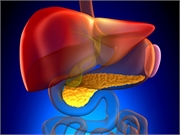Pancreas Cells That Drive Type 1 Diabetes Appear in Healthy People, Too

WEDNESDAY, Oct. 21, 2020 (HealthDay News) -- Scientists knew that dangerous T-cells lived in the pancreases of people with type 1 diabetes, but a new study shows they also take up residence in the pancreases of healthy individuals.
Researchers from the La Jolla Institute for Immunology in California used a new staining technique to show where these cells had gathered in human tissue samples. They were surprised that even tissue from healthy people showed these cells in high numbers in the pancreas.
What's the difference? Even though healthy people have these immune system cells, people with type 1 diabetes have T-cells that are close to or infiltrate cell clusters inside the pancreas. Beta cells that live in these clusters make insulin to regulate blood sugar, but in people with type 1 diabetes the T-cells kill those beta cells.
"These T-cells are like predators," said senior study author Dr. Matthias von Herrath, from the La Jolla Institute. "And we always thought that beta cells would die if the predator was there. But it turns out the T-cells are already there. They just seem to be waiting for a signal to attack."
Though previous research has shown that healthy people have these T-cells in their bloodstream, it wasn't known they would travel to the pancreas, according to the researchers.
"We can't say that these are the only culprits in type 1 diabetes," von Herrath said in an institute news release. "But these T-cells are the prime suspects."
What this does for diabetes research is add evidence to a theory that type 1 diabetes is not caused by malfunctioning T-cells attacking beta cells, but rather that the body is already making these T-cells and something in the pancreas triggers the attack.
Von Herrath said this could mean that an effective type 1 diabetes therapy would need to target the pancreas. Researchers plan to study how the T-cells behave, as well as whether other proteins in the cell clusters might draw T-cell attacks.
"We still have so many questions," Christine Bender, study co-author and a postdoctoral fellow in the von Herrath Lab, said in the release.
The study was published Oct. 16 in Science Advances.
More information
Find out more about type 1 diabetes at the American Diabetes Association.

The news stories provided in Health News and our Health-E News Newsletter are a service of the nationally syndicated HealthDay® news and information company. Stories refer to national trends and breaking health news, and are not necessarily indicative of or always supported by our facility and providers. This information is provided for informational and educational purposes only, and is not intended to be a substitute for medical advice, diagnosis, or treatment.

